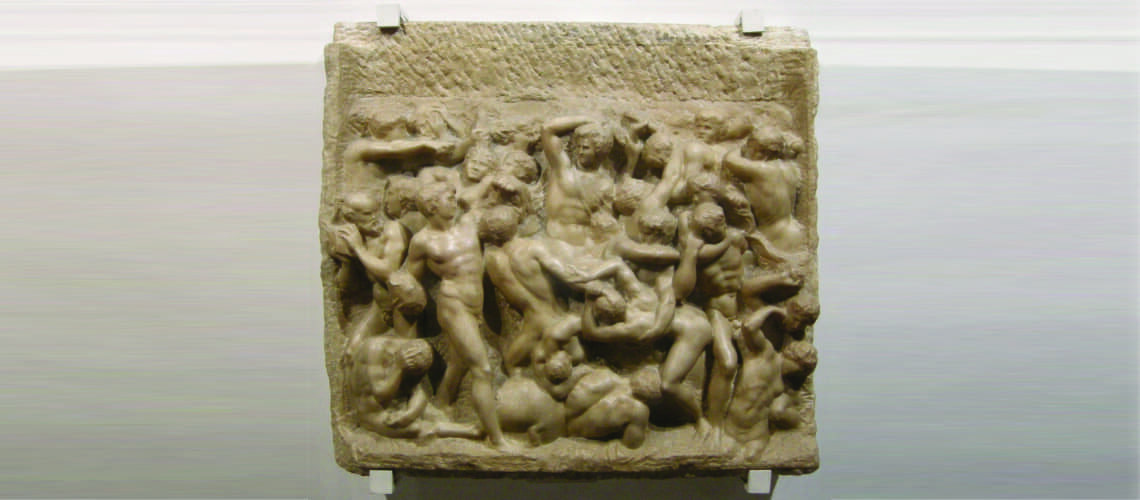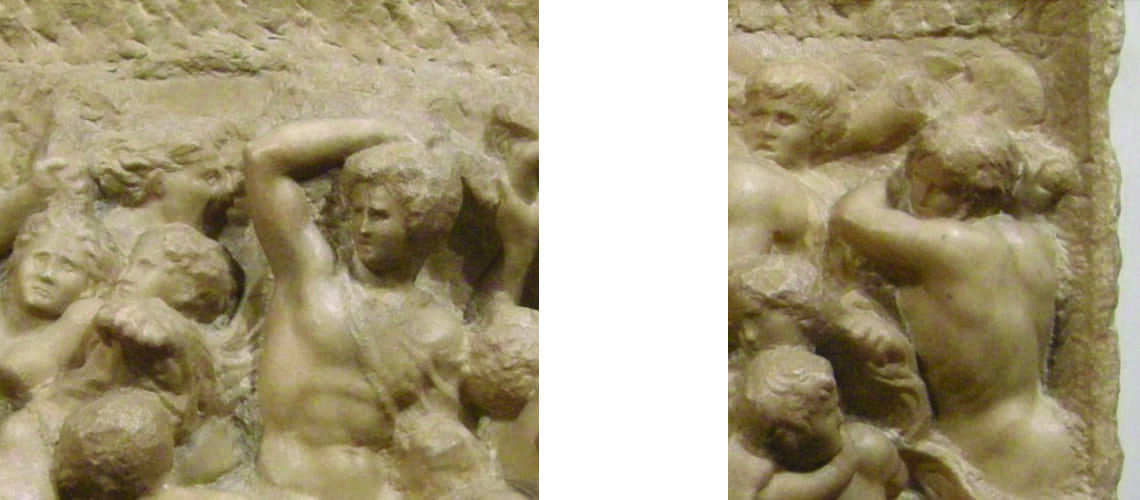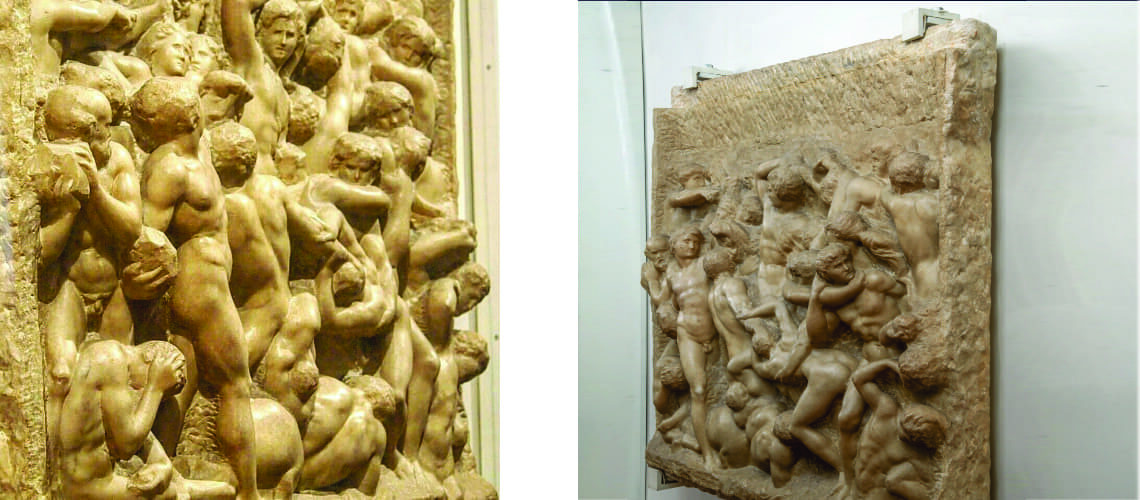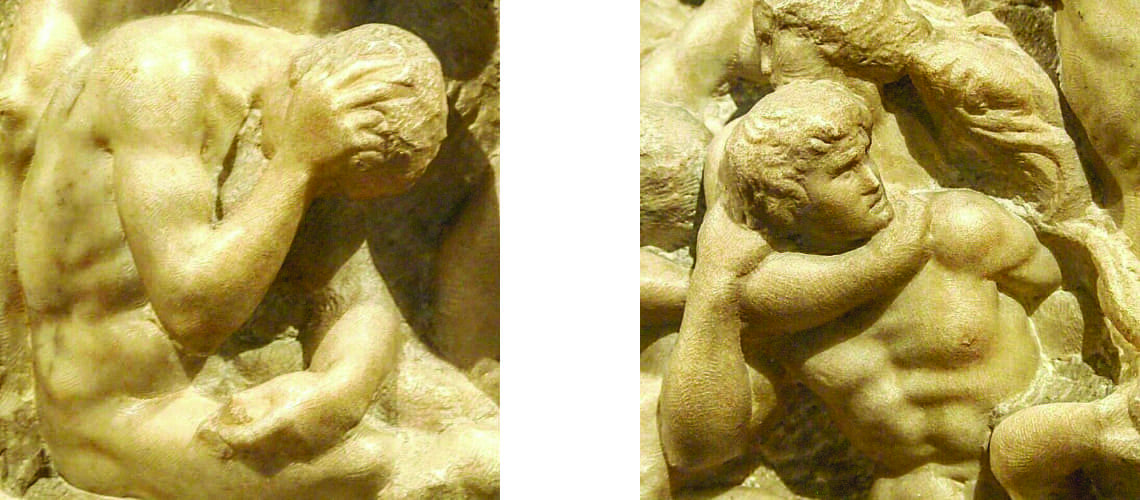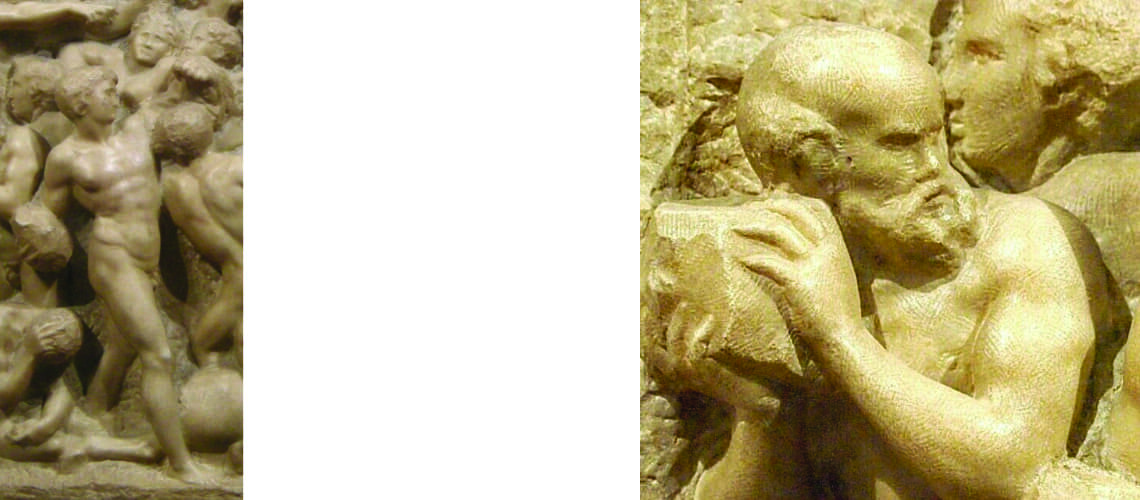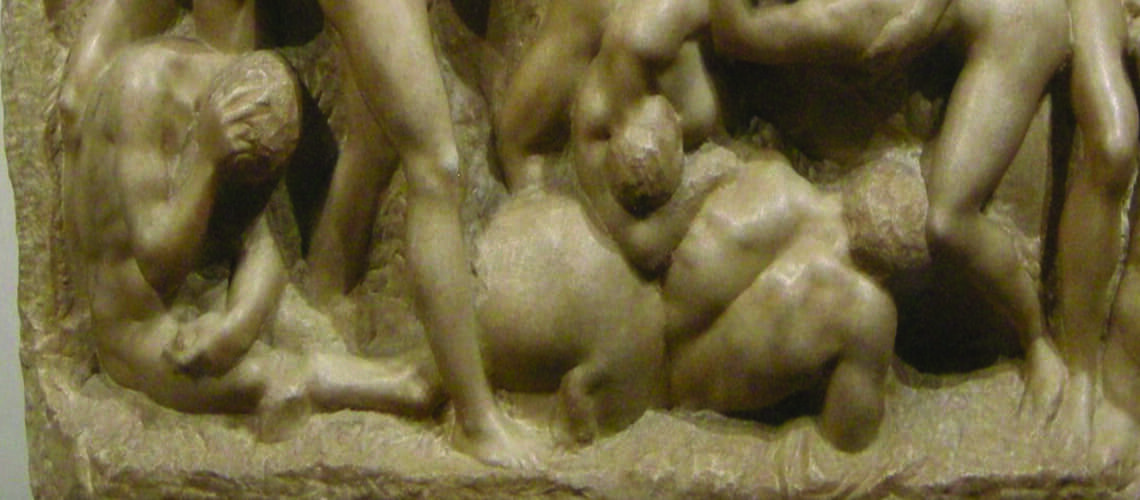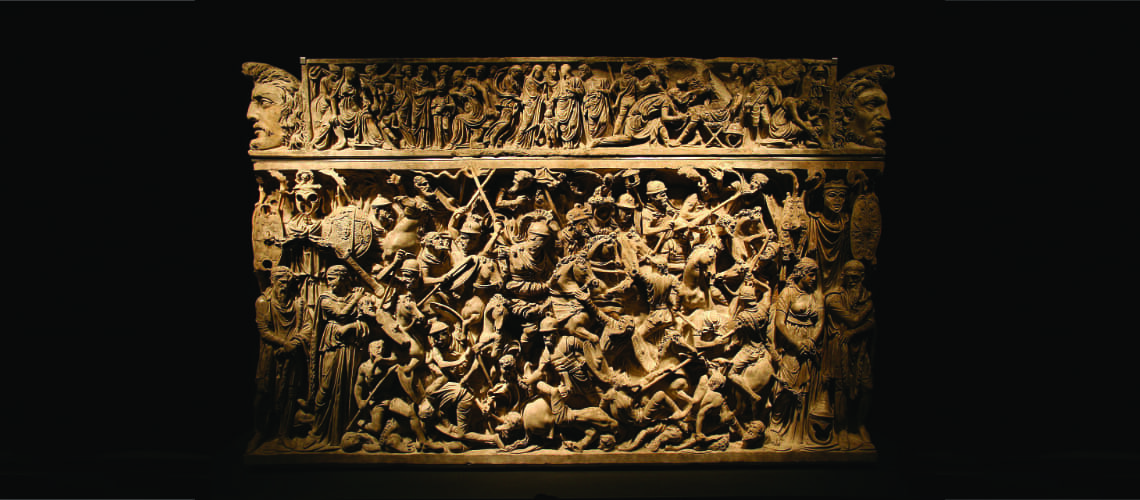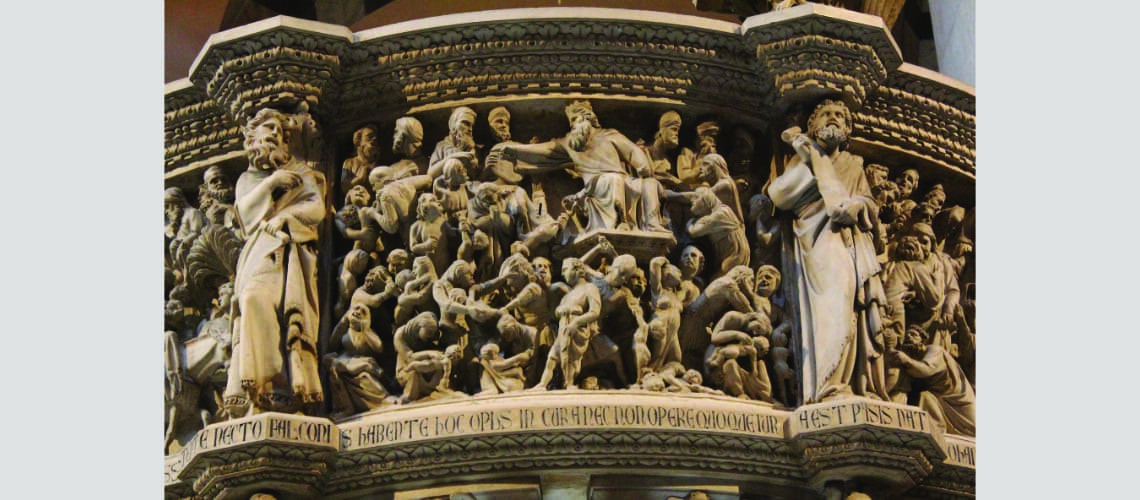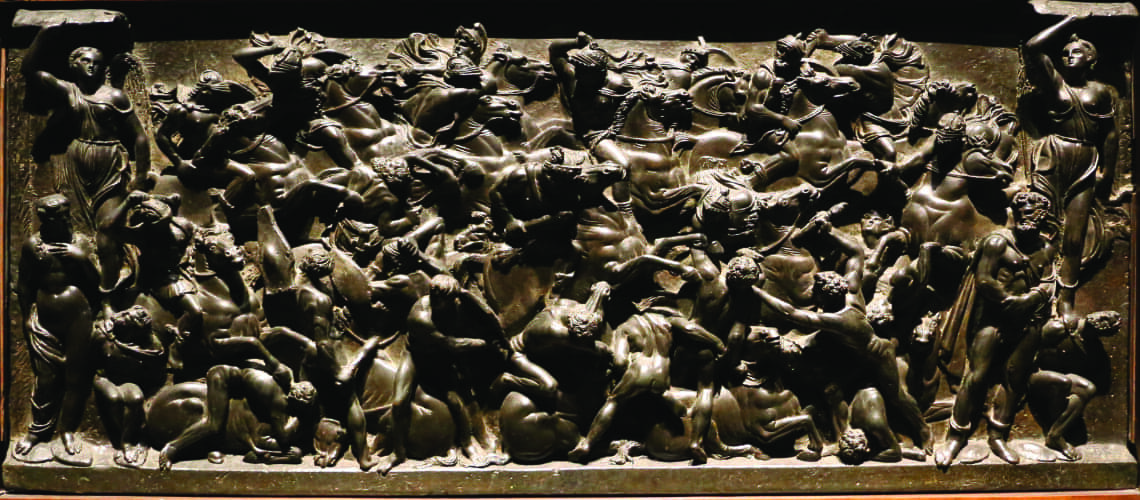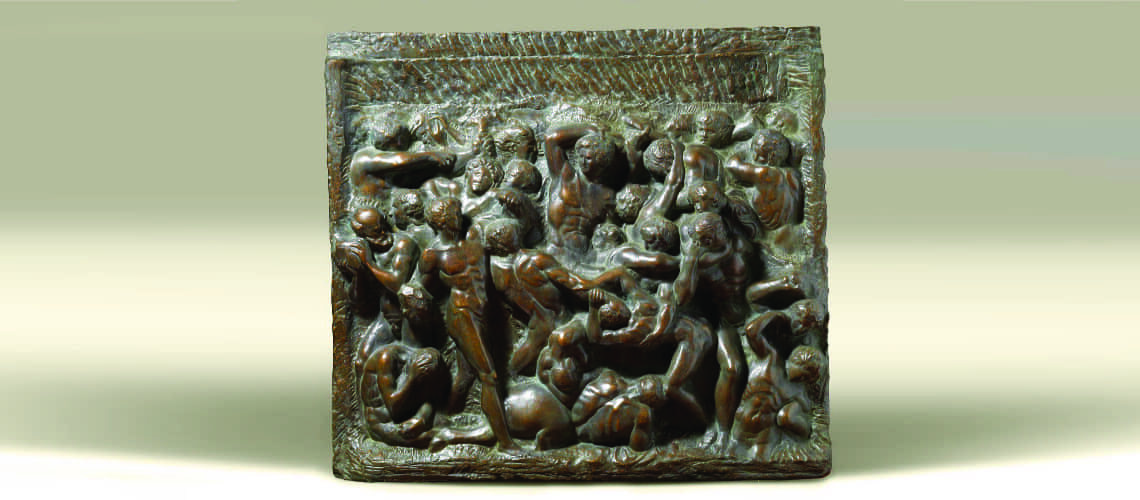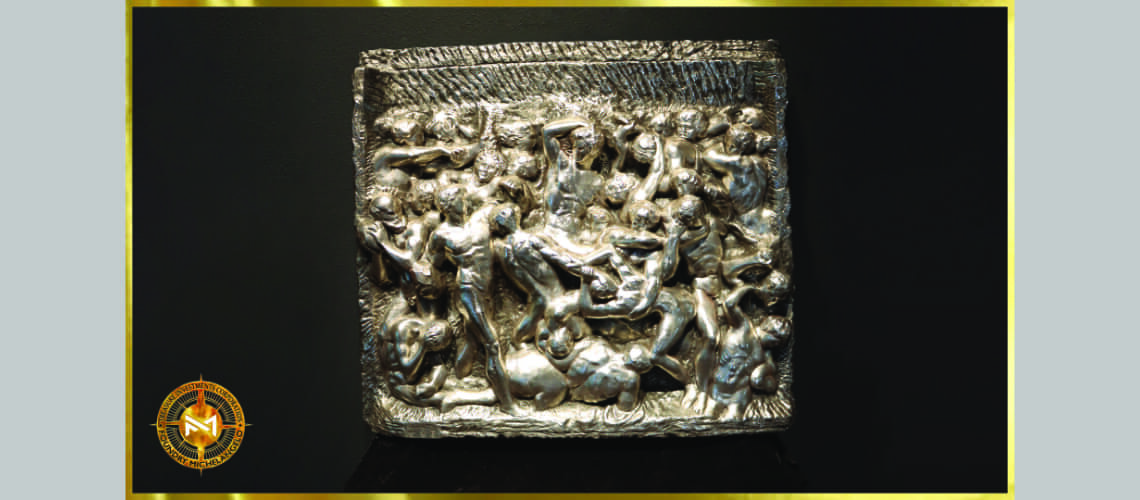Michelangelo and his first sculptures
Part II
Vasari, in the 1568 edition of the “Vite” continues:
…Dove in questo tempo consigliato dal Poliziano, uomo nelle lettere singulare, Michelagnolo fece in un pezzo di marmo datogli da quel signore [Lorenzo il Magnifico] la battaglia di Ercole coi centauri, che fu tanto bella che talvolta per chi ora la considera non par di mano di giovane, ma di maestro pregiato e consumato negli studii e pratico in quell’arte. Ella è oggi in casa sua tenuta per memoria di Lionardo suo nipote come cosa rara che ell’è…
…Where at this time advised by Poliziano, a singular man in letters, Michelagnolo painted on a piece of marble given to him by that lord [Lorenzo the Magnificent] the battle of Hercules with the centaurs, which was so beautiful that sometimes for those who now consider it it does not seem by the hand of a young man, but of a esteemed master, consummate in his studies and practiced in that art. She is today kept in his house in memory of his nephew Lionardo as a rare thing that she is…
Michelangelo, Battle of the Centaurs, 1492, Casa Buonarroti
The first written mention of this high relief is in a letter sent by the Gonzaga agent in Florence, Giovanni Borromeo, to the Marquis of Mantua Federico. The agent writes that he wants a certain painting of “figure jude, che combattono, di marmore, quale havea principiato ad istantia di un gran signore [Lorenzo il Magnifico] ma non è finito. E’ braccia uno e mezzo a ogni mane, et così a vedere è cosa bellissima e vi sono più di 25 teste e 20 corpi varii, et varie attitudine fanno.”
“Naked figures, fighting, in marble, which was begun at the request of a great lord [Lorenzo the Magnificent] but was not finished. It is one and a half arm lengths on each hand, and thus it is a very beautiful thing to look at and there are more of 25 heads and 20 various bodies, and various attitudes they make.”
THE BATTLE OF THE CENTAURS
This high relief, as well as the Madonna della Scala, were executed by Michelangelo for his personal taste, incited by Lorenzo the Magnificent, but without any real client. He began it after finishing the bas-relief of the Madonna della Scala, but was unable to finish it: in 1492 Lorenzo the Magnificent, with whom he had a filial relationship, died; Michelangelo was shocked.
According to Vasari the subject would have been the battle of Hercules against the Centaurs, while Condivi, in his Life of Michelagnolo Buonarroti writes that it was the rape of Deianira and the fight of the Centaurs, probably due to the presence of some female figures: a behind the central figure above and another on the far right strangling a man.
|
Michelangelo, Battle of the Centaurs, 1492, Casa Buonarroti, detail with female heads |
Michelangelo, Battle of the Centaurs, 1492, Casa Buonarroti, detail with a female body |
After his experience in the Donatellian-inspired Madonna della Scala, Michelangelo wanted to try his hand at a high relief in which he could sculpt human bodies in various poses and attitudes. The realization of the plans is certainly less successful than the bas-relief of the Madonna, perhaps also because the relief was not finished.
|
Michelangelo, Battle of the Centaurs, 1492, Casa Buonarroti, detail |
Michelangelo, Battle of the Centaurs, 1492, Casa Buonarroti, detail |
It is not clear whether the surfaces of the few figures that appear to have been finished would have received subsequent processing with rasps and abrasives to make the marble skin smooth and shiny; it is more likely, however, that Michelangelo wanted to leave the surface with the light marks of the steps, as he then did in other subsequent works by him.
|
Michelangelo, Battle of the Centaurs, 1492, Casa Buonarroti, detail |
Michelangelo, Battle of the Centaurs, 1492, Casa Buonarroti, detail |
The work is composed of a mass of tangled figures that are difficult to distinguish, fighting with each other and moving around the central one who has his arm raised above his head and who represents the central apex of the ideal triangle that all the characters make up. On the left a man depicted entirely while, twisting to the right, is about to throw a large stone and an old man on the left edge is preparing to throw a boulder.
|
Michelangelo, Battle of the Centaurs, 1492, Casa Buonarroti, detail |
Michelangelo, Battle of the Centaurs, 1492, Casa Buonarroti, detail |
On the left a group of characters fighting in an inextricable knot of bodies and arms, below the wounded lying and sitting among which is the body of a Centaur.
Michelangelo, Battle of the Centaurs, 1492, Casa Buonarroti, detail
Michelangelo was probably inspired both by the Roman sarcophagi and probably by the high reliefs of the Pulpit of the Cathedral by Giovanni Pisano; However, he certainly must have been inspired by the lost wax cast bronze bas-relief created in 1480 by Bertoldo di Giovanni, director and teacher in the Garden of San Marco where the young Michelangelo studied for some years.
Roman sarcophagus of Portonaccio, 180 AD, Pal. Massimo alle Terme, Rome
Giovanni Pisano, Massacre of the Innocents, Pulpit of the Cathedral, ca. 1310, Pisa
Bertoldo di Giovanni, Battle between Romans and Barbarians, 1480, Bargello
Posthumous casting from a cast made on the Casa Buonarroti original by the Ferdinando Marinelli Artistic Foundry of Florence
Unique silver specimen at the Michelangelo Museum, Battle Ground, WA, USA

